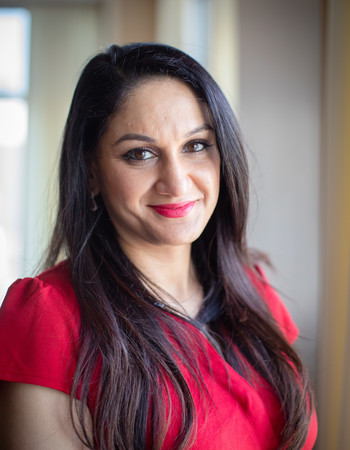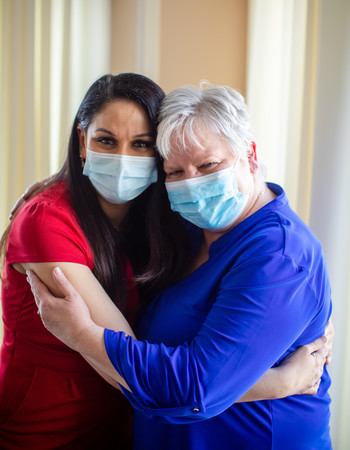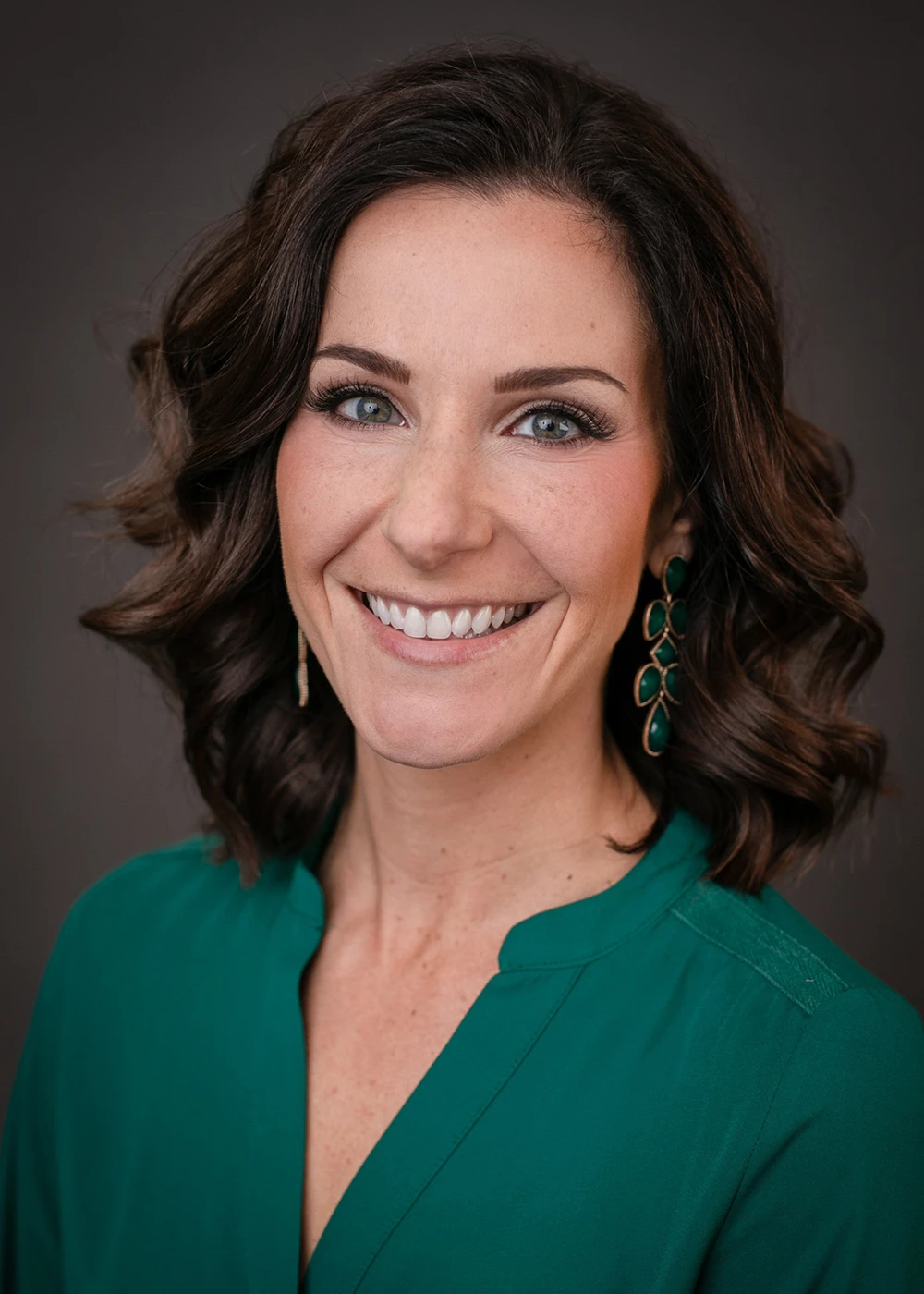





The Meaning of Care Magazine
A Recurring Dance With Cancer Fosters Stronger Sense of Self
Published: March 16, 2022It was 1998 when Sandy Krupka and a group of her friends road-tripped to Norfolk for a country western dance. That’s where Sandy had planned on meeting a guy she was interested in. She wasn’t expecting to meet the love of her life that night, but she did anyway. And it wasn’t the guy she was crushing on.

“I had just gotten done dancing with him, and that’s when this other guy, Dale, came up to me and said, ‘What do I have to do to get you to dance with me?’ I told him, ‘Well, just ask.’ And he did. He was an OK dancer – as long as he let me lead.”
The First Diagnosis
It’s now a running joke between the two: Dale only agrees to dance with his wife if she lets him lead.
“I always have good intentions of letting him,” Sandy said with a laugh. “But I just can’t help myself. Somehow, I always end up taking the lead and running the show. I will say, though: He’s a really good follower.”
And he’s been following Sandy’s lead every step of their marriage – putting her first and taking her cues, especially as she’s battled cancer. Her positive attitude over the past eight years has made it easier for him to keep one, too. Her fighting spirit has ignited his own.
“We just decided that we weren’t going to let this paralyze us,” Sandy said. “We decided we’d get through it – that we’d be fine. And we prayed that we’d be stronger because of it.”
They adopted that mindset in 2013, when Sandy returned home from a work trip.
“I was feeling sluggish, experiencing some abdomen pain – almost like I had pulled a muscle,” she said. “I was losing weight, but yet my clothes fit tighter – just very bloated. And sure enough, when I got home, even Dale said he never saw me look so bad.”
After making their way to the emergency department, Sandy learned that she was harboring two massive tumors in her pelvis – one the size of a cantaloupe, and the other a small watermelon.
“I was basically carrying a child, and I had no idea,” she said. “It’s not like I was really overweight, so how is that even possible – to not have any clue?”

Her diagnosis? Stage 3B ovarian cancer.
“That means it’s not generally curable,” said Niyati Nadkarni, MD, Sandy’s gynecologic oncologist at Methodist Estabrook Cancer Center (MECC). “At that stage, we can get people into what we call remission, which is where the disease isn’t active. But more than likely, it’s going to return at some point.”
An Introduction to Harper’s Hope
Sandy kept a brave face even as her own children – 7 and 9 at the time – refused to go near her or touch her out of fear they might contract her disease.
“That was incredibly heartbreaking,” Sandy said. “Because when you’re going through something like that, that’s what you need – the love and support of your family. But they were so young. They didn’t understand.”
In fact, they witnessed their aunt – Sandy’s sister – lose her battle with ovarian cancer a couple years prior, and, more than anything, they were afraid the same would happen to their mom.
Thanks to Harper’s Hope – a cancer survivorship program made possible by the generous support of Methodist Hospital Foundation – Sandy received counseling to help process her thoughts and emotions while understanding those of her children. Little did she know that behavioral health would be just one of many support services at MECC that would be key in her journey toward healing.
Additional Support
Sandy’s treatment plan of surgery and chemotherapy was physically and mentally challenging, she said. But few side effects compared to the painful reality that came when her hair began to thin. She turned to the Methodist Inner Beauty Salon for her first two wigs.
“Losing your hair is pretty emotional,” she said. “Because when you wear that cap, you know people are thinking, ‘Oh, she has cancer.’ And I’ve never liked to call attention to myself. I’ve never wanted people to feel sorry for me.”
“That's what we're doing for these patients,” said Lori Fuchs, CMF, Inner Beauty’s coordinator. “We’re restoring their confidence by helping them put their best face forward. And sometimes that simply means helping them become another face in the crowd.”
Sandy also received nutrition support, lymphedema therapy and genetic testing through Harper’s Hope, which brought unexpected comfort and confidence as she marched into nearly five years of remission.
“I felt like I had finally reached the point where cancer wasn’t in the back of mind anymore,” she said. “I didn’t think about it when I woke up. And it wasn’t the last thing I thought of before bed.”
Blessings in the Recurring Battle
In 2017, Sandy began noticing eerily familiar pain and bloating. A follow-up appointment with Dr. Nadkarni confirmed Sandy’s fear: Her cancer had returned.
She resumed chemotherapy and was put on oral medication, which brought her back to remission until 2019 – when a spot on her spleen meant her cancer had yet again returned and begun to metastasize. This made Sandy eligible for a clinical trial involving infusion therapy in March 2020. Her course of treatment has since changed, but her determination to keep fighting hasn’t.

“It’s very easy to treat her,” Dr. Nadkarni said of Sandy, her patient of almost 10 years. “She’s very receptive and has the best attitude. She accepts what’s going on, and she’s always ready to take the next steps. When it comes to treating cancer, that psychological component matters. If you’re mentally strong – or at least try to be – I think the process goes a lot better.”
Sandy attributes her mental strength to the support of her family – four people who’ve grown closer as a result of multiple devastating diagnoses.
“We actually came up with a family mantra,” Sandy said. “We will pray. We will fight. We will love. And we will live. As the kids grew older, we’d say our prayers, and we’d always end with that. It’s just kind of always kept us going.”
As for her relationship with Dale, Sandy said that’s become stronger, too. Thanks to him, fighting cancer has never been a solo act for her – rather a dance in which they’ve learned to share the lead.
“When I’m down, he’s right there to pick me up, and vice versa,” Sandy said. “We’ve gotten really good at balancing each other out.”
But perhaps the biggest blessing of all to come from recurring cancer is a stronger sense of self, she said.
“I think it takes a special person to survive cancer time and time again and continue moving forward. I refuse to let it define who I am. While my appearance gives it away – that yes, I have cancer – I’m more than that. I’m a fighter. I’m not a statistic. I’m a role model for my kids and others – to never give up.”
More Resources
- Read more from the spring 2022 issue of The Meaning of Care Magazine.
- Learn more about Harper’s Hope and other Faces of Hope like Sandy.
- Read more about the importance of annual pelvic exams.
- Learn more about gynecologic oncology at Methodist.
- Read more stories on cancer care at Methodist.
- Read more inspiring stories of Methodist patients and providers.


